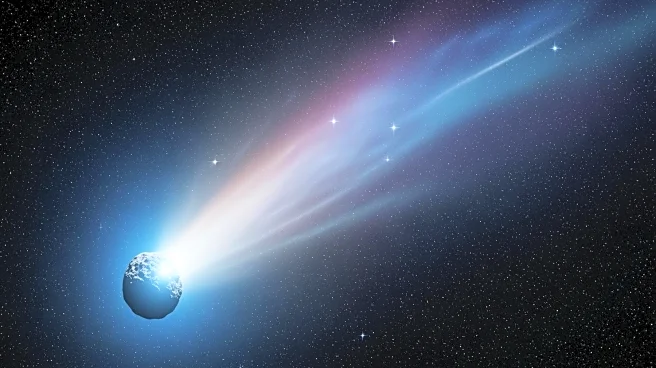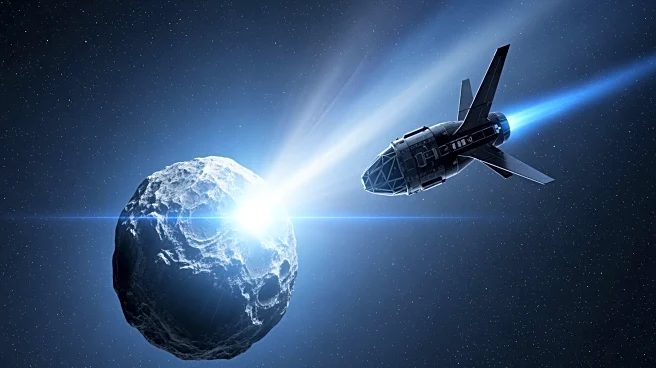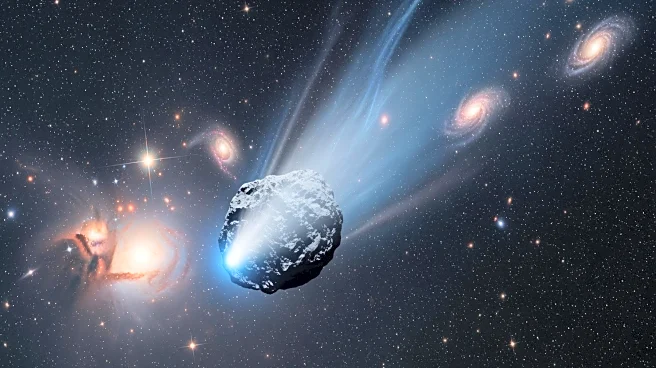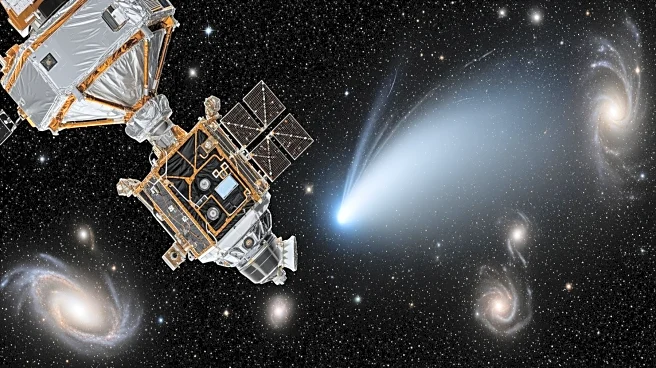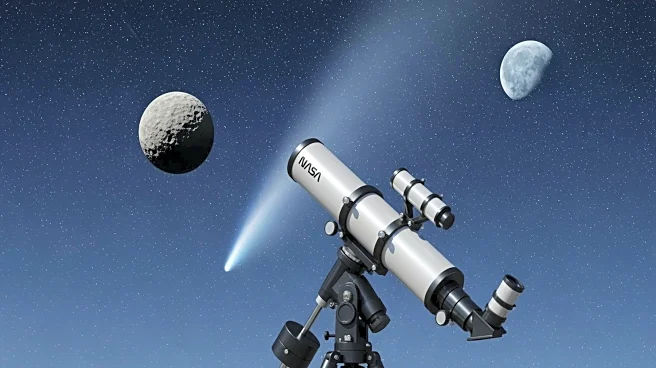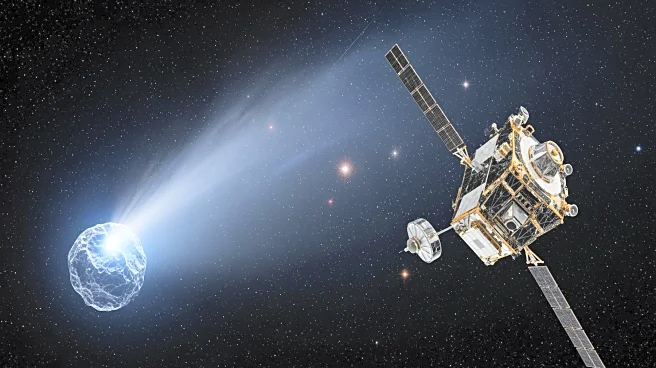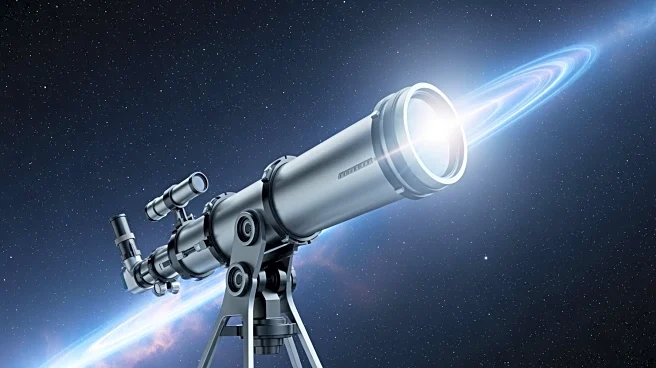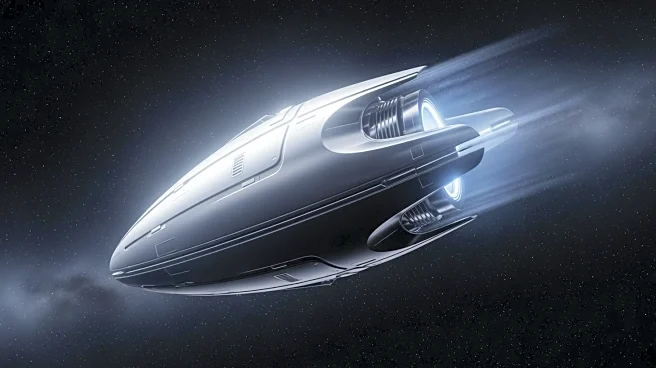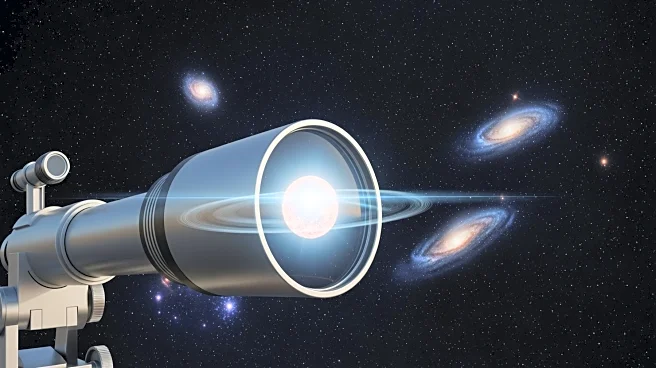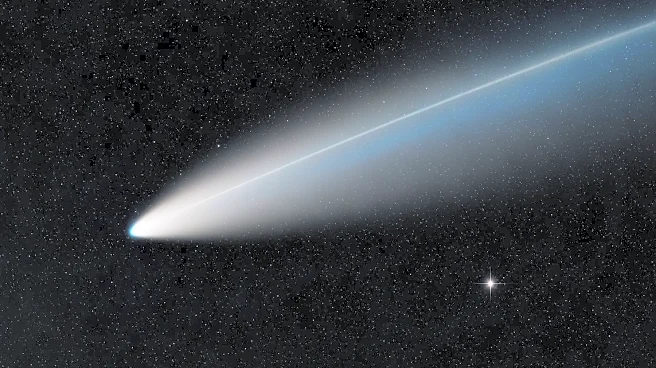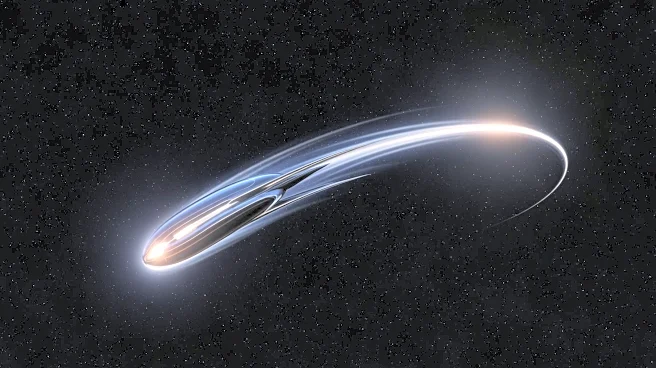What's Happening?
NASA has identified 3I/ATLAS as the third known interstellar object to pass through our solar system. The comet exhibits non-gravitational acceleration, a typical behavior for comets as they approach the Sun.
Dr. Luis Agustín Chavarría Garrido, a visiting astronomer at UNC Asheville, confirmed that 3I/ATLAS is a natural object, dismissing any speculation of it being alien technology. The comet was first detected on July 1, 2025, by the ATLAS telescope in Chile, and further observations have confirmed its interstellar origin due to its high velocity. Despite some unusual features noted by Harvard's Professor Avi Loeb, such as its lack of a visible tail, the comet poses no threat to Earth, remaining 170 million miles away at its closest approach.
Why It's Important?
The identification of 3I/ATLAS as an interstellar comet is significant for astronomers and scientists studying planetary systems beyond our own. Each interstellar object provides valuable insights into the diversity and formation of planetary systems across the galaxy. The comet's harmless trajectory reassures the public and scientific community that there is no immediate threat to Earth. Additionally, the event highlights the capabilities of current astronomical technology, such as the ATLAS telescope, in detecting and tracking celestial objects. This discovery contributes to the growing body of knowledge about interstellar phenomena and aids in understanding the composition and behavior of objects from other star systems.
What's Next?
NASA plans to continue monitoring 3I/ATLAS as it progresses through the solar system. The comet is currently visible with small telescopes or binoculars near the constellation Virgo. As it moves closer to Earth, scientists will gather more data to study its composition and trajectory, enhancing understanding of interstellar comets. The ongoing observation will help refine models of comet behavior and contribute to the broader study of planetary systems. The scientific community remains vigilant for any new developments or data that could provide further insights into the nature of interstellar objects.
Beyond the Headlines
The presence of 3I/ATLAS in our solar system underscores the importance of distinguishing scientific facts from misinformation. NASA has addressed the circulation of fake images online, emphasizing the need for accurate representation of scientific phenomena. This incident highlights the challenges faced by scientists in combating conspiracy theories and promoting public understanding of astronomy. The event also serves as a reminder of the ethical responsibility to communicate scientific discoveries transparently and accurately, fostering trust and interest in space exploration.
